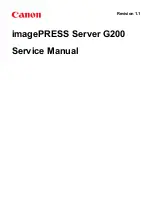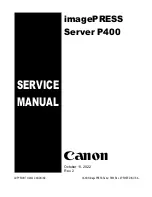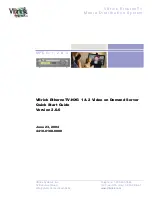
Network Addressing
A-6
PortMaster 4 Configuration Guide
A subnet mask identifies the subnet field of a network address. This mask is a 32-bit
number written in dotted decimal notation with all 1s (ones) in the network and subnet
portions of the address, and all 0s (zeros) in the host portion. This scheme allows for the
identification of the host portion of any address on the network.
Table A-3 shows the subnet masks you can use to divide a class C network into subnets.
Subnetting, Routing, and VLSMs
Routers and hosts can use the subnet field for routing. The rules for routing on subnets
are identical to the rules for routing on networks.
Releases before ComOS 3.5. Before ComOS 3.5, correct routing required all subnets
of a network to be physically contiguous. The network must be set up so that it does not
require traffic between any two subnets to cross another network. Also, RFC 950
implicitly requires that all subnets of a network have the same number of bits in the
subnet field. As a result, ComOS releases before ComOS 3.5 require the use of the same
subnet mask for all subnets of a network. ComOS used the value of 255.255.255.255 for
the user’s Framed-IP-Netmask regardless of the value of the attribute.
ComOS 3.5 and Later Releases. ComOS 3.5 and subsequent releases support
variable-length subnet masks (VLSMs); therefore, the restrictions in earlier ComOS
releases no longer apply. The subnets of a network need not be physically contiguous
and can have subnet masks of different lengths.
However, ComOS still ignores the Framed-IP-Netmask value by default. To ease the
transition to use of VLSMs, ComOS sets user-netmask to off by default. This means
that all netmasks specified in the user table or RADIUS are treated as if they were
255.255.255.255. To use VLSMs and have ComOS accept the value in
Framed-IP-Netmask, enter the following commands:
Command> set user-netmask on
Command> save all
Caution – The VLSM feature affects both routing and proxy ARP on the PortMaster and
must be used with caution.
Table A-3
Subnet Masks for a Class C Network
Length
(Subnet
Bits)
Number of
Subnets
Number of
Hosts per
Subnet
Hexadecimal
Subnet Mask
Dotted Decimal
Subnet Mask
24
1
254
0xffffff00
255.255.255.0
25
2
126
0xffffff80
255.255.255.128
26
4
62
0xffffffc0
255.255.255.192
27
8
30
0xffffffe0
255.255.255.224
28
16
14
0xfffffff0
255.255.255.240
29
32
6
0xfffffff8
255.255.255.248
30
64
2
0xfffffffc
255.255.255.252
32
256
1
0xffffffff
255.255.255.255
!
Summary of Contents for PortMaster 4
Page 12: ...Contents xii PortMaster Configuration Guide...
Page 24: ...Basic Configuration Steps 1 6 PortMaster 4 Configuration Guide...
Page 48: ...PortMaster Security Management 2 24 PortMaster 4 Configuration Guide...
Page 102: ...Testing Your Location Configuration 7 12 PortMaster 4 Configuration Guide...
Page 122: ...Configuring Ports for Modem Use 9 8 PortMaster 4 Configuration Guide...
Page 152: ...Performing Diagnostics 11 4 PortMaster 4 Configuration Guide...
Page 162: ...Frame Relay Subinterfaces 12 10 PortMaster 4 Configuration Guide...
Page 168: ...Troubleshooting a Leased Line Connection 13 6 PortMaster 4 Configuration Guide...
Page 182: ...Command Index Command Index 4 PortMaster 4 Configuration Guide...















































